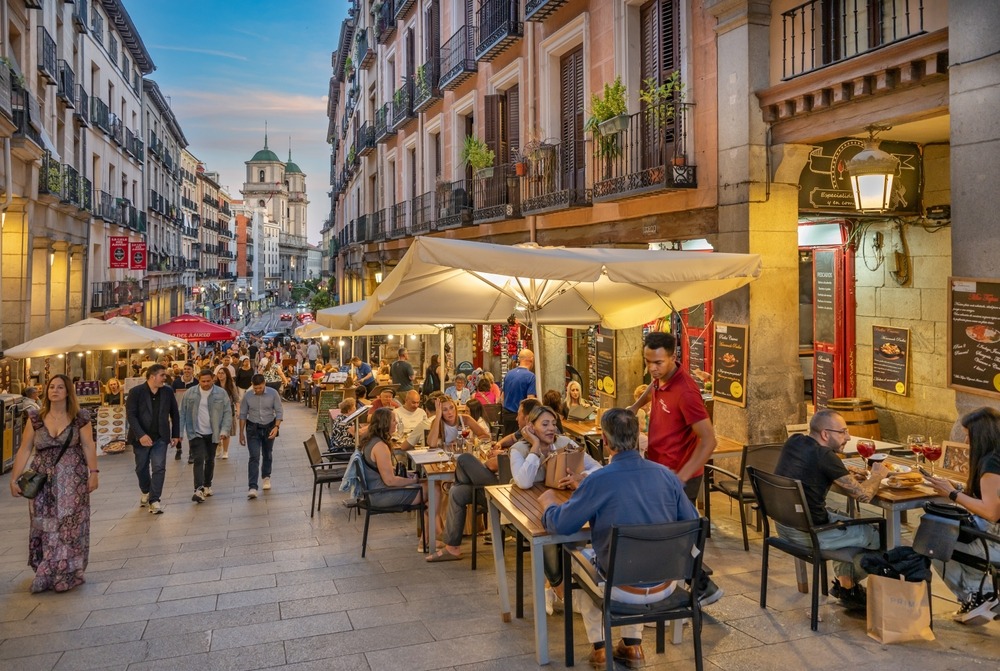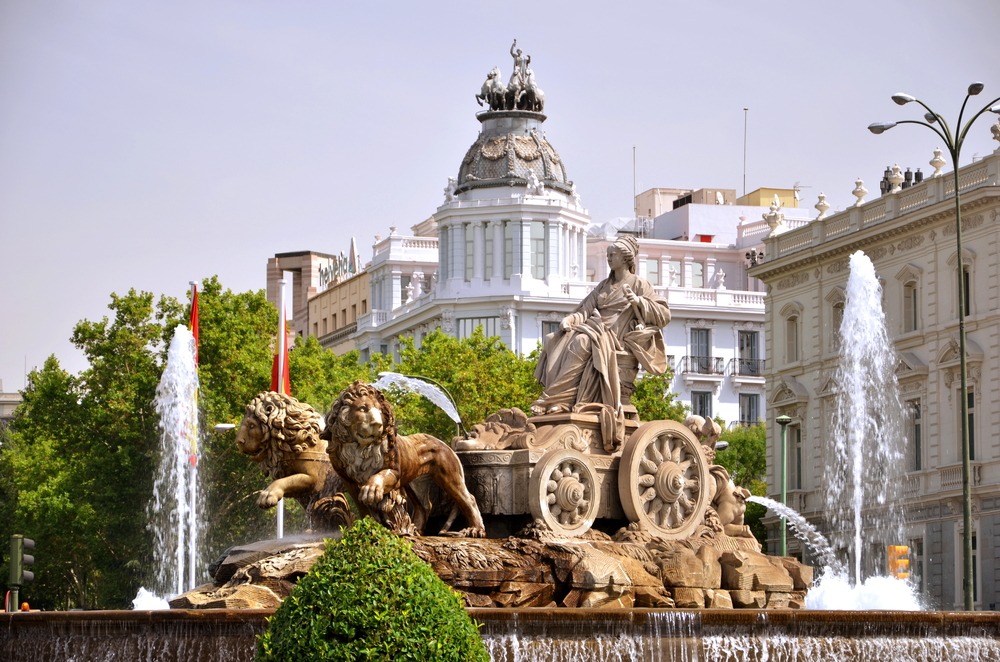The History of Madrid, Spain and Its Top 25 Attractions
Madrid, the vibrant capital of Spain, boasts a rich history that spans over a millennium. From its obscure origins as a Moorish outpost to its evolution into a global cultural and political powerhouse, Madrid’s journey is one of resilience, transformation, and artistic brilliance. Today, the city stands as a symbol of Spanish identity, tradition, and cosmopolitanism, offering an array of attractions that reflect its dynamic past and energetic present.

The History of Madrid
Madrid’s origins trace back to the 9th century when Emir Muhammad I of Córdoba ordered the construction of a fortress on the Manzanares River. The area was then called Mayrit, derived from the Arabic al-Majrit, meaning “place of abundant water.” This modest outpost served as a strategic military site for the Moors during their occupation of the Iberian Peninsula.
After centuries under Muslim rule, Madrid was captured by Christian forces under King Alfonso VI of Castile in 1085. The town remained relatively small but strategically important through the Middle Ages. It was during the reign of King Philip II in 1561 that Madrid’s destiny changed forever—he moved the royal court from Valladolid to Madrid, elevating it to the capital of Spain. This pivotal decision sparked a construction boom, as royal palaces, churches, and public buildings began to reshape the city’s landscape.
The 17th and 18th centuries, under the Habsburg and later Bourbon monarchs, saw the emergence of grand architectural styles and artistic patronage. The Bourbon dynasty, especially King Charles III, is credited with modernizing the city—building paved roads, installing streetlights, and developing Madrid into a European capital with Enlightenment ideals.
The 19th century brought political upheaval, civil strife, and occupation during the Peninsular War, but also saw the growth of civic infrastructure and culture. In the 20th century, Madrid endured the Spanish Civil War (1936–1939), during which it suffered significant damage. Under Franco’s dictatorship, the city was reshaped again, expanding into a major urban center.
Following the death of Franco in 1975, Spain transitioned to democracy and Madrid blossomed as a modern European capital. With the growth of the European Union and globalization, Madrid has become an economic and cultural hub, blending its royal heritage with cutting-edge innovation.

Top 25 Attractions in Madrid
-
Royal Palace of Madrid (Palacio Real) – The official residence of the Spanish Royal Family, this opulent palace is known for its lavish interiors, armory, and sweeping plazas.
-
Plaza Mayor – A 17th-century square enclosed by elegant three-story buildings, once the site of bullfights and public executions, now a lively hub of cafes and events.
-
Puerta del Sol – Madrid’s symbolic center and the location of the “Kilometer Zero” marker. It’s a bustling plaza famous for the Tío Pepe sign and the New Year’s Eve countdown.
-
El Retiro Park (Parque del Retiro) – A vast and elegant green space featuring sculptures, fountains, gardens, and the stunning Crystal Palace.
-
Prado Museum (Museo del Prado) – One of the most prestigious art museums in the world, showcasing masterpieces by Velázquez, Goya, Titian, and Rubens.
-
Reina Sofía Museum (Museo Reina Sofía) – A contemporary art museum best known for Picasso’s “Guernica,” alongside works by Dalí and Miró.
-
Thyssen-Bornemisza Museum – Completing Madrid’s “Golden Triangle of Art,” this museum holds an eclectic mix of European works from the Middle Ages to modernity.
-
Gran Vía – Madrid’s Broadway and Fifth Avenue in one, this lively street is packed with theaters, shopping, and historic buildings.
-
Temple of Debod – A 2,200-year-old Egyptian temple gifted to Spain, now sitting in a serene park with breathtaking sunset views.
-
Almudena Cathedral (Catedral de la Almudena) – A relatively modern cathedral (consecrated in 1993) that blends Gothic, Neo-Romanesque, and Neo-Classical styles.
-
Mercado de San Miguel – A historic iron-framed market turned gourmet food hall offering tapas, wine, and fresh regional delicacies.
-
Plaza de Cibeles – A majestic square surrounded by monumental buildings like the Cybele Palace and featuring the iconic Cibeles Fountain.
-
Santiago Bernabéu Stadium – The legendary home of Real Madrid CF, offering stadium tours and a glimpse into football royalty.
-
Puerta de Alcalá – An 18th-century neoclassical gate that once served as a city entrance, now a photogenic icon of Madrid.
-
CaixaForum Madrid – A modern cultural center with vertical gardens and ever-changing exhibitions of photography, design, and art.
-
Palacio de Cibeles (Cybele Palace) – Once the main post office, now Madrid’s City Hall and public observation deck with citywide views.
-
El Rastro Market – Spain’s most famous flea market, held every Sunday in the La Latina district, offering antiques, clothes, and curiosities.
-
Teatro Real (Royal Theatre) – Madrid’s historic opera house, hosting world-class performances in a grand 19th-century setting.
-
Chueca District – A trendy, LGBTQ+-friendly neighborhood filled with chic boutiques, bars, and lively plazas.
-
Museo Arqueológico Nacional – A treasure trove of Iberian, Roman, and Islamic artifacts tracing Spain’s complex history.
-
Malasaña District – Known for its bohemian vibe, indie shops, and central role in the Movida Madrileña, the post-Franco cultural explosion.
-
Matadero Madrid – A former slaughterhouse transformed into a cutting-edge arts and performance center.
-
Campo del Moro Gardens – Hidden behind the Royal Palace, these lush gardens provide a quiet retreat with royal charm.
-
Real Jardín Botánico – The Royal Botanical Garden is a peaceful haven of over 5,000 plant species, near the Prado Museum.
-
Casa de Campo – Once a royal hunting estate, this massive urban park now includes a zoo, an amusement park, and a cable car with panoramic views.

Madrid’s story is a tapestry woven from conquests, crowns, revolutions, and reinventions. As Spain’s capital, it balances deep tradition with contemporary vitality, presenting a city that is both grand and intimate. Whether wandering through centuries-old plazas, savoring tapas in buzzing markets, or marveling at masterworks in world-renowned museums, Madrid offers a cultural richness and human warmth that leaves a lasting impression on every visitor.

































